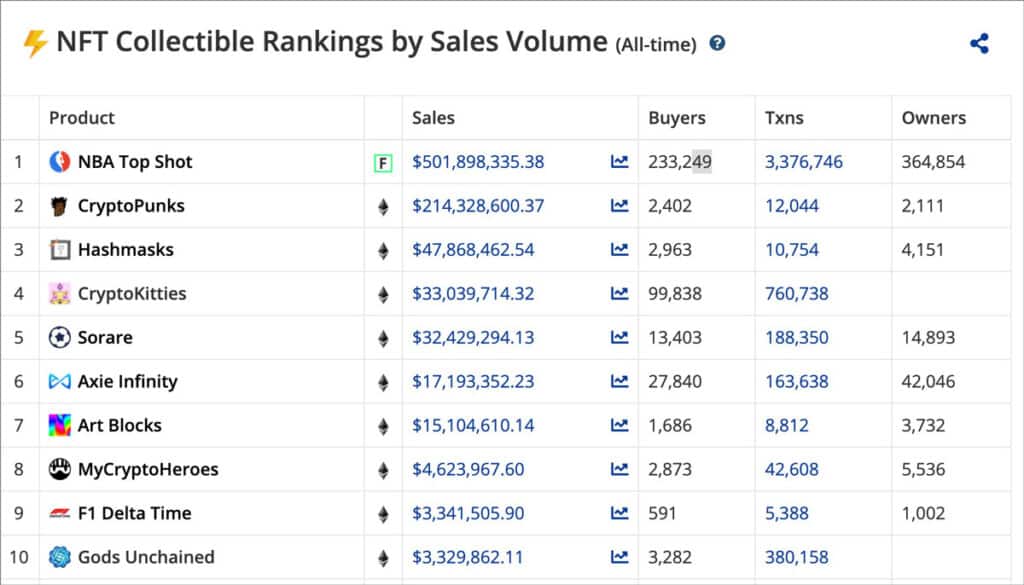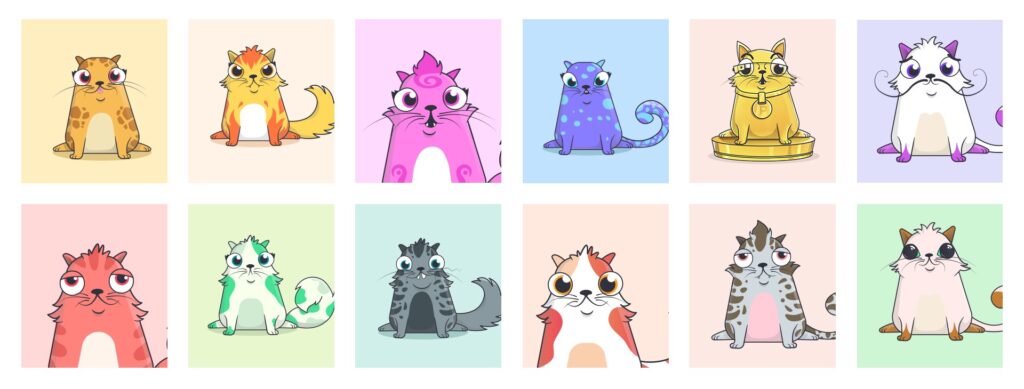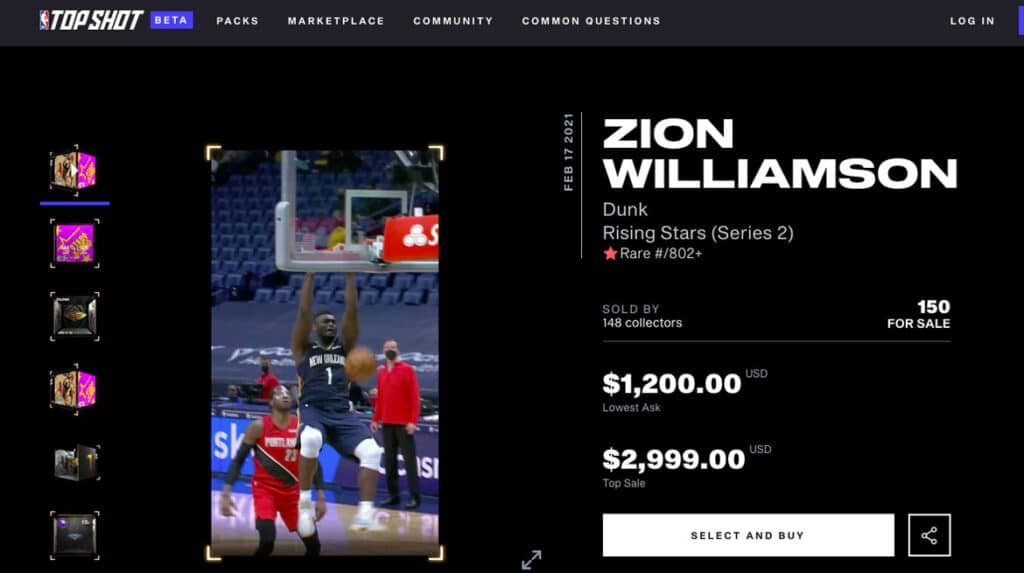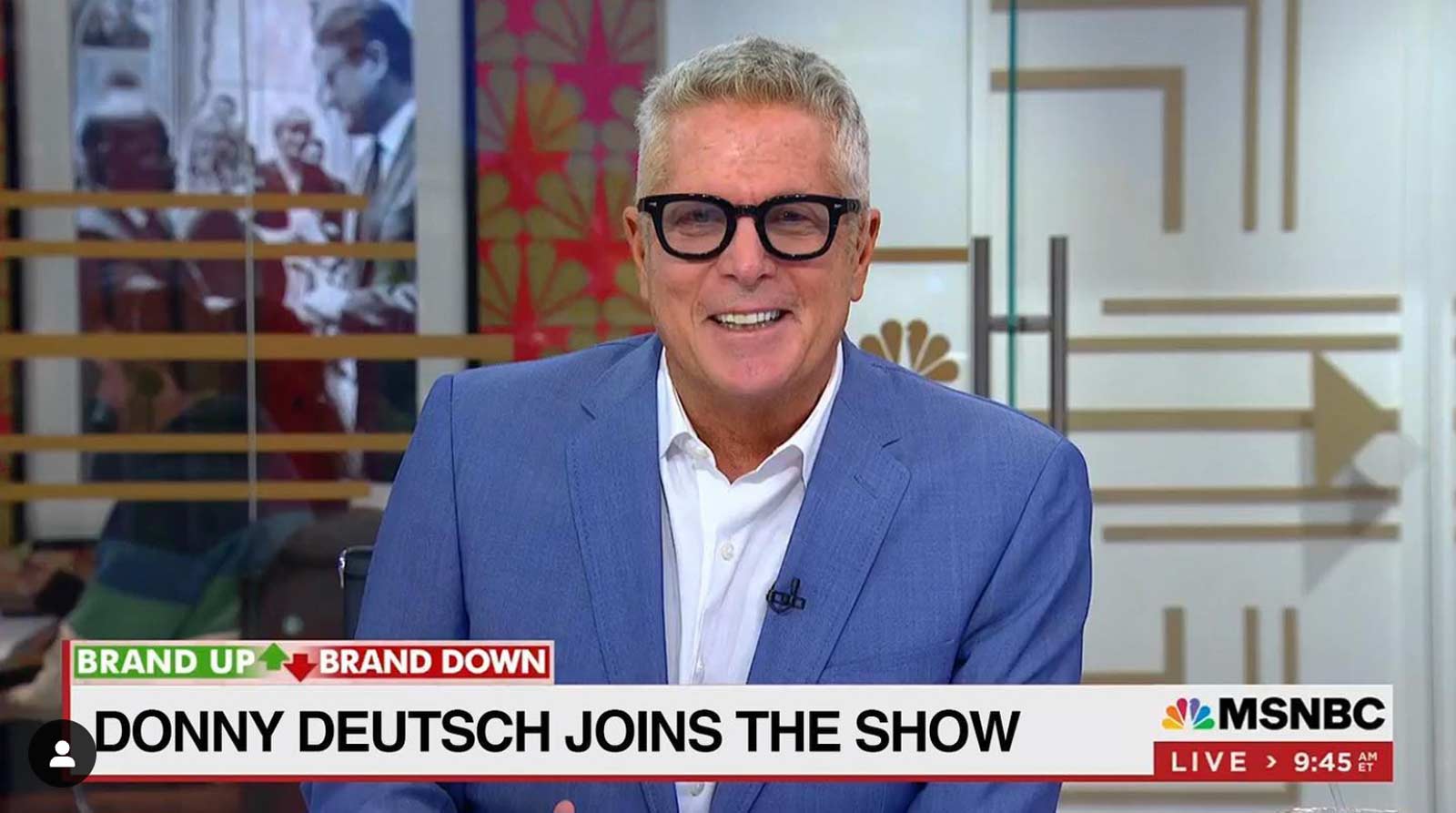Head of Dapper Labs discusses reasons behind huge early traction of NBA Top Shot
Part 2 in our series NFTs: Unlocking the potential of the Digital Economy.
The top result on Google says this about Roham Gharegozlou: “Roham is founder and CEO of Axiom Zen, an award-winning venture studio that specializes in mainstream applications of new platforms and emerging technologies including blockchain and artificial intelligence.”
Oh, the power of understatement.

During a 3½-hour webinar titled “Understanding the NFT Opportunity” by Inside.com Thursday, Roham (let’s just call him by his first name, like Serena, Tiger or LeBron) dazzled the hundreds of participants with an overview of the potential of NFTs to change the world, if you want to strip away the techie jargon and get down to how this new movement may well usher in a new world-changing dimension of technological change.
And it all started with some weird-looking cats.
Roham, you see, is the founder of CryptoKitties, the online game on Ethereum developed by his Vancouver-based studio Dapper Labs that allows players to purchase, collect, breed and sell one-of-a-kind virtual cats. The business basically pioneered the concept of bringing scarcity (through blockchain authentication) to the digital realm.
Fortunately, the story doesn’t end with kitties. Dapper Labs went on to partner with the NBA to create NBA Top Shot, a fascinating venture that has gone gangbusters since its debut in October 2020. As Sports Illustrated explains:
NBA Top Shot — a partnership between the NBA and Dapper Labs, a blockchain company with a history of highly trafficked marketplaces — is, in its simplest explanation, an online forum for trading virtual basketball cards. Fans can buy and sell video clips of their favorite players, called “moments,” from recent seasons. These moments exist on the blockchain — essentially, a digital record book kept using cryptography — which makes them unique, impossible to counterfeit and immediately authenticated.
“Virtual basketball cards” is the wrong term, given that these are short video clips.
CryptoSlam, a third-party tracking source that monitors marketplace transactions, shows that NBA Top Shot is the world’s leading NFT Collectible marketplace, with sales surpassing $500 million today and digital assets going to 233,249 buyers for an average sale of $2,151 (which translates into 1.02 Ether).

That’s impressive on its own, but more impressive is what some of the top-selling moments are going for. For instance, a Cosmic edition Series 1 LeBron James dunk from a game against the Sacramento Kings on Nov. 15, 2019 was sold as an NFT for $208,000. Top Shot charges a 5% transaction fee on sales, Roham said.
A Cosmic edition Series 1 LeBron James dunk from a game against the Sacramento Kings on Nov. 15, 2019 was sold as an NFT for $208,000.
OK, enough background. Below I recount what Roham had to say in his conversation wtih superstar angel Jason Calacanis (disclosure: Jason is an old friend) on Thursday.
Roham and Jason cover the digital collectibles market pioneered by NBA Top Shot, but they also cover such groundbreaking items as CryptoKitties, Cryptopunks, the Christie’s sale of Beeple’s digital artwork, the rollout of Flow as a new blockchain layer to help developers create new NFT marketplaces, the role of open source and the emerging importance of smart contracts.
Now that the video is on YouTube (see the embed at top), I urge you to watch it to capture the full conversation between Roham and Jason.
Highlights of the interview with Roham Gharegozlou
Here’s a partial transcript of select portions of Thursday’s conversation, curated and edited for clarity and to cut down on some of the sports chatter that’s not really relevant to the NFT community:
Roham Gharegozlou: Most of the Top Shots have been contemporary moments because we think that’s the sustainable bedrock that’ll make sure Top Shot is a hundred-year product not just a historical product.
Jason Calacanis: So let’s talk a little bit about these initial NFTs that have sold. Which NFTs in Top Shot are trading at the highest price?
Roham: A couple of different LeBrons have been sold for over $200,000. … Most of the ones with the most sales above $100,000 are LeBron. But there’s quite a few Giannis [Antetokounmpo], Zion [Williamson] and others in there too.
Jason: And so if somebody sells [an NFT] for $200,000, you get a $10,000 market fee, and some portion of that gets split with the players union, the NBA and yourself. …
Let’s talk about the rights. I looked at the Beeple sale. I’m sure you watched that one even though you weren’t involved in that one in any way.
Roham: Correct. No, I mean we’re friends with Mike [the artist Mike Winkelmann] as well as Metakovan [the purchaser] but we weren’t directly involved.
Jason: When you saw that [Beeple’s digital artwork sold for $69 million], what was your reaction?
Roham: I thought it was pretty cool. I think it’s about all of us supporting the artists. And knowing Mike, knowing Beeple, he’s someone who’s been working without a payday for years and years and years. He’s just been creating digital art, year after year, day after day, and connecting with his community. And he was the one who kicked off this upswing in digital art and getting people’s attention. It was really the first instance of a mainstream digital artist to jump into NFTs. And I think his time in the spotlight is well deserved. And I think Metakovan’s support of people is amazing to see.
Jason: If you were to guess, in 10 years will that trade for more or less than $70 million?
Roham: If I had to guess, I would guess more. The reality is we have so many more dollars in the system that, who knows, in terms of purchasing power what that means. But in dollar terms, yes, absolutely more.

And with art, yes, I frame it as support for the artist. Of course there’s also speculation on the viability of that artist and on the long-term potential of that artist. Top Shot is different. I see Top Shot more like DC trading cards. And you know there are other kind of asset classes within NFTS that are different — you know, Cryptopunks, they’re very different. That’s more of a sort of Bitcoin style, you know, limited supply thing that is doesn’t really do much but is is limited supply and has a lot of social meaning. So, so I think every category is different but that that’s how I like to see digital artists as primarily support for the artists, as well as a stake in that artist’s future.
Jason: What about the rights to the object you’re buying? So in the case of a Top Shot, I own this dunk. Can I play that on a looped video that’s projected on the side of a building or put it in my office and or could I commercially monetize it in any way? Can I put it on a T-shirt? What rights am I actually buying when I have that LeBron dunk?
Roham: I think about it the same way as you would if you buy a LeBron rookie card. You have the right to sell that LeBron rookie card anywhere, you can put it on eBay. What you can’t do is use that photo of LeBron somewhere else and commercialize it or use his name or likeness to promote your own product. Even we can’t do that without working directly with LeBron and his team.
Ultimately, what we believe NFTs need to be in order to reach their full potential is essentially a file format that lets you say, “I own this.” And for that to mean, you can put it anywhere on the Internet you want, you can put it on physical objects, physical frames for digital videos, you can put it on your Twitter and things like that.
That’s our vision of NFTs, where even the Web 2.0 platforms can very easily read, “Hey, this person is for sure the owner of this item.” And so you get a little star saying it’s authentic.
Jason: So you can’t commercilize it at Top Shot, but do you think that will exist in other NFTs?
Roham: Yeah. For example, with Cryptokitties, if you have a Cryptokitty, you can commercialize it up to $100,000 a year. You can put it on T-shirt, you put it on mugs, you can put it on an advertisement. We want people who are making businesses out of it to contact us. You can’t do something that hurts the value of other people’s cats. I think niftylicense.org and Cryptopunks does the same thing. You actually have full rights to the image and can do whatever you want with it — even commercialize it up to $100,000. The only thing you can’t do are things that are illegal or that hurt the value of other people’s [collectibles].

Jason: Your company recently raised $300 million at a $2.4 billion valuation. How do you plan on deploying that capital and what are your thoughts on this incredibly hot market we’re in?
Roham: I think we’re still very early, and the expectations are very high. We believe deeply in the long term of the technology, but there’s still a lot of infrastructure that needs to be built. There are a lot of … dynamics to these open economies. I think that digital pictures that can be traded on marketplaces is really scratching the surface. That’s sort of what websites were to the Internet.
Digital pictures that can be traded on marketplaces is really scratching the surface.”
What we’re focused on is what kinds of applications can you wrap around these token economies? What can you do with smart contracts as your as your sources of truth rather than software programs that run on closed networks? And what does that do to open source software?When you have a multi-decade mindset, you want to take it very methodically because [you] won’t gain by overinflating people’s expectations. What we’ve got to do is deliver deliver deliver. People’s expectations will get ahead of reality but we’l catch up to it and fill in the blanks.
In the meantime, we’ll focus on our community on NBA Top Shot to keep people happy and just build an awesome product. … But a lot of [the money raised] is also going to go toward supporting developers that are not us, that are building on top of Flow and other open source platforms to show people you don’t actually need an NBA license to be successful with this new technology.
[Flow bills itself as “a new blockchain built for the next generation of apps, games, and the digital assets that power them.”]
Jason: Is your business going to be these partnerships, or is there a broader platform business here that you’re considering?
Roham: No, we’re already a platform business. You know, Flow as a part of Dapper Labs. We have more Flow tokens than we have developers, let’s put it that way. And you know, the majority of our team are infrastructure engineers who are building either the open source piping or the payments systems and the compliance and marketplace tooling on top of it that every single partner needs, whether it’s some of those media companies you mentioned or sports leagues. They’re going to want to use that and so that’s where we see our long term value as being a platform partner for all of these content partners to be able to reach their communities in a way that’s right for their communities right rather than us trying to say, Hey this is the master eBay or whatever and you have to plug into it.
Jason: You’re very committed to open source. That means anybody can create a Cryptokitties competitor or a Top Shot competitor, correct?
Roham: Open source means the code is open, but most of open source on the Internet pre-blockchain has actually meant the data is closed, right? Facebook runs on open source software, but a developer can’t just build on Facebook’s data.
What blockchain allows is what we call open services or composability where the data lives out in the open and so anyone can build tooling on top of it. There’s 30-plus products on Top Shot right now. Some of that is venture funded with zero platform risk, we can’t cut them off even if we wanted to. It’s both open source code as well as open data, and that allows these things to sort of compose on top of each other so that’s what I think is unstoppable in terms of the value blockchain can bring to people.

Jason: So technologically I could create a digital trading card company …
Roham: Yeah, technologically speaking it’s possible. But [you’d have to secure legal rights and IP]. The NBA can choose to give the rice to whoever they want so the power goes away from a digital platform in the middle, which is where today [the tech companies], and it goes toward the creator and the customer — the people that arguably in my view are actually creating value in any of these digital networks.
Jason: Does that mean you’re risking your entire enterprise?
Roham: We built a multi-billion dollar company on the idea that we will make the world a better place by giving both the content creator and the customer what they want. Is our business going to be as big as Facebook’s? Maybe, maybe not. But we don’t think lock in should be defensibility — that’s the core thing. We don’t think monopolies should be built around data that actually belongs to the people that are creating it.
Jason: Is there something in those smart contracts that I’m not thinking of? All I think about is the royalty, but is there something in smart contracts [I’m not aware of]?
Roham: Yeah. The next big thing in smart contracts generally that no one is thinking about is their modularity and their composability. And you know it took a decade of open source software on the Internet before anyone took GitHub seriously. I think the same thing will happen with smart contracts and composability over time. Most people still think of smart contracts as legal contracts that you can’t change. They don’t realize that these are software programs that can do anything you want, you can just build them on top of each other like Lego blocks. Frankly, I don’t think even at Dapper Labs we know the full potential yet.
Jason: I am super fascinated by what these smart contracts could do. Roham, congratulations on your amazing success. … My God, and you haven’t even really scratched the surface of it yet.
Roham: We’re just getting started. That’s the coolest part.






